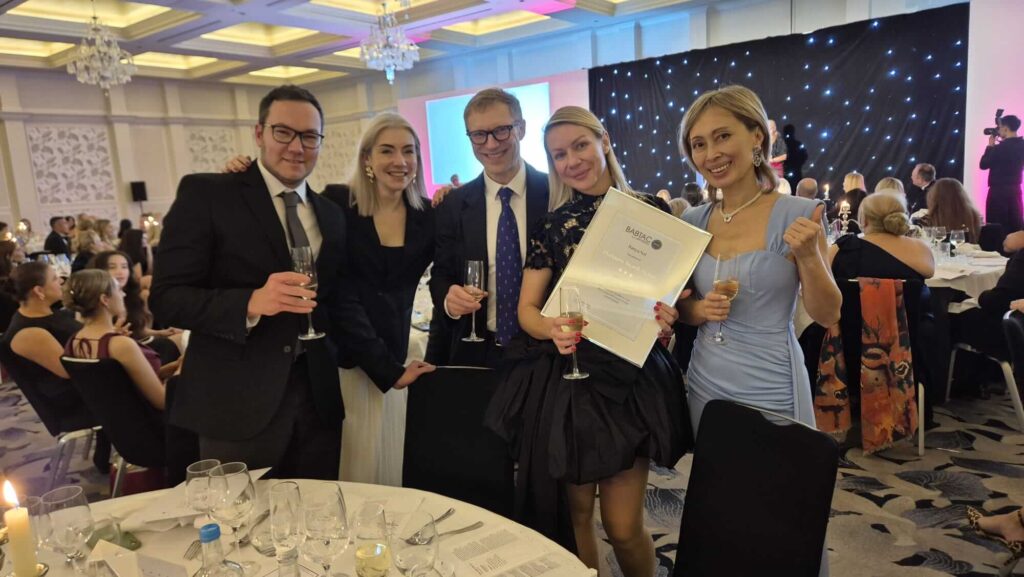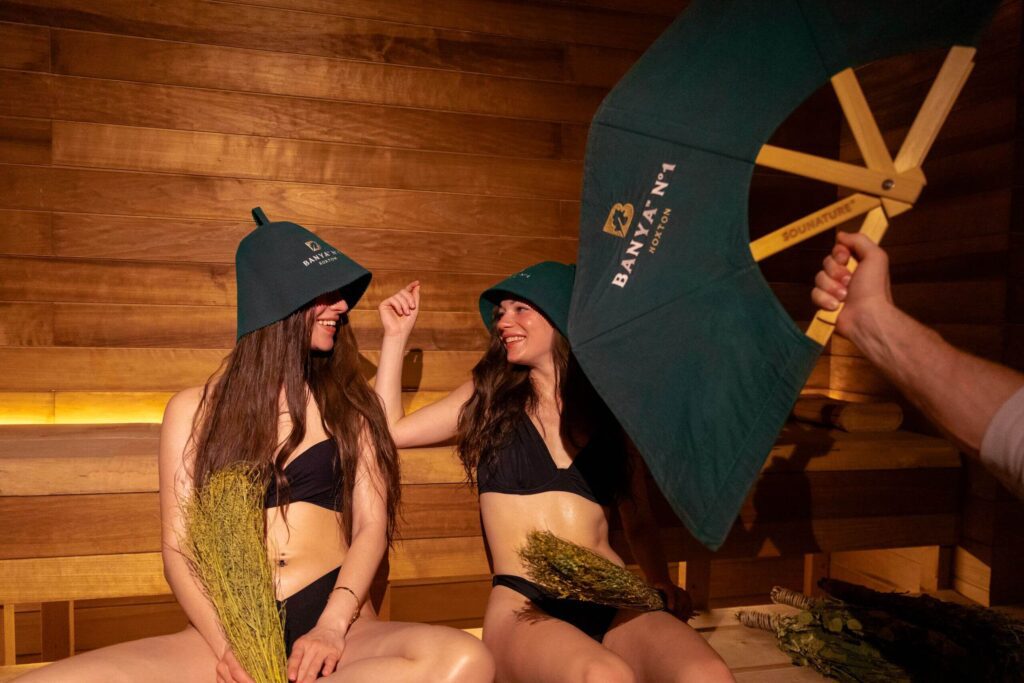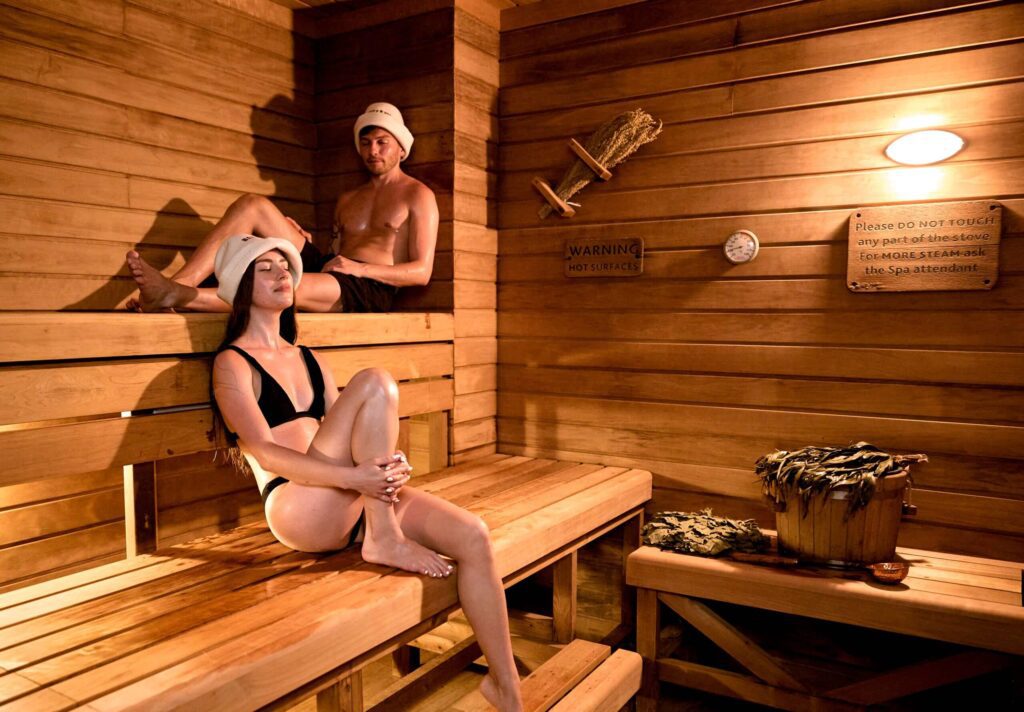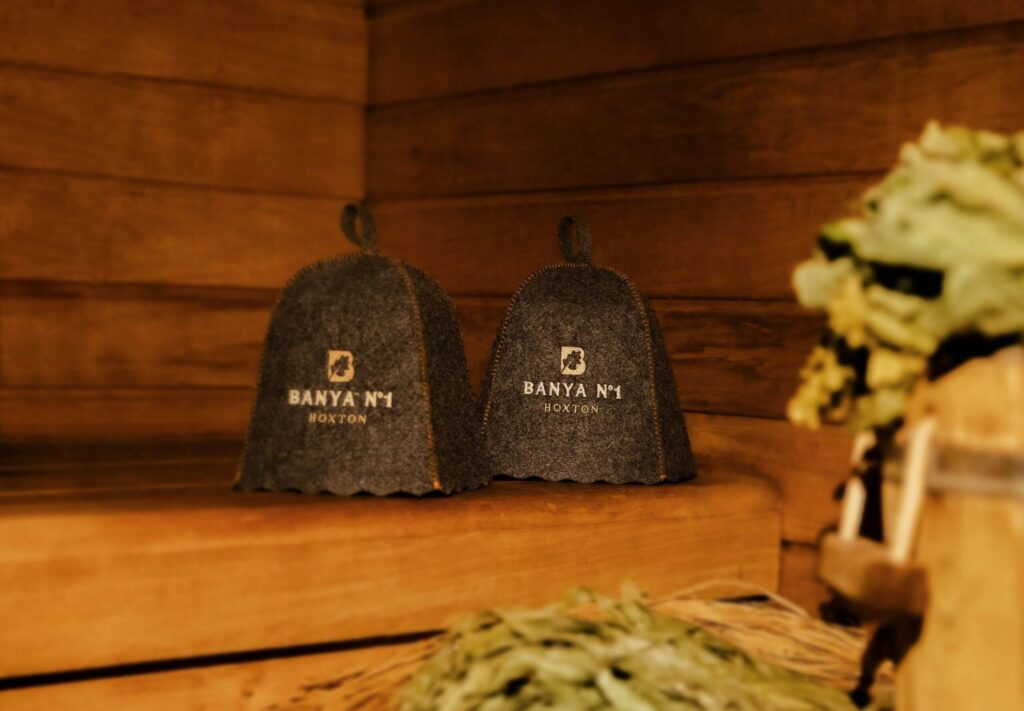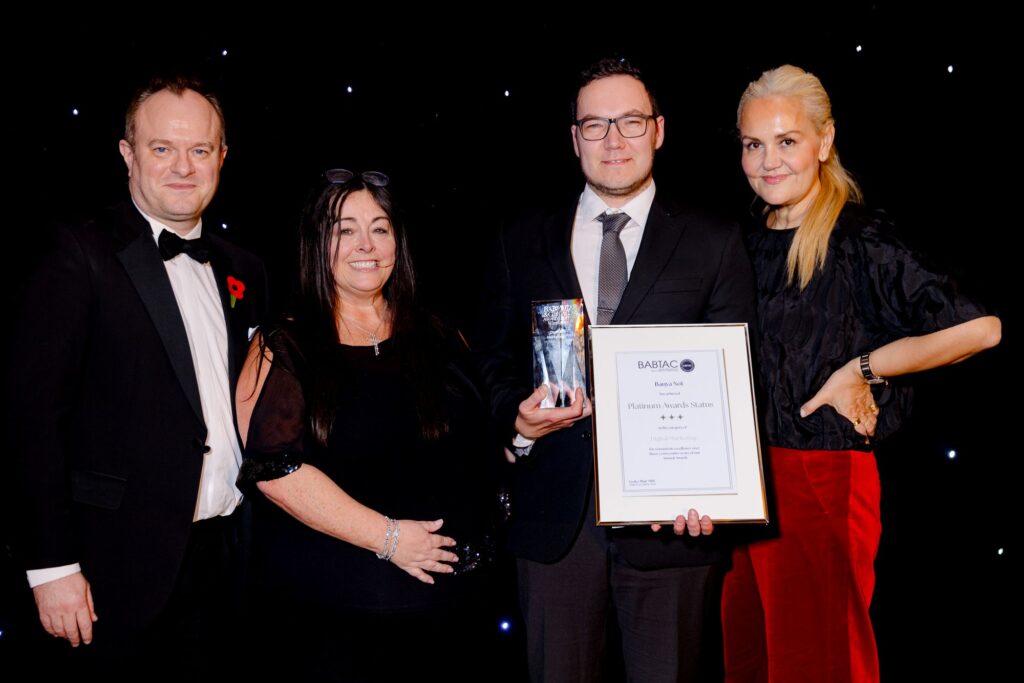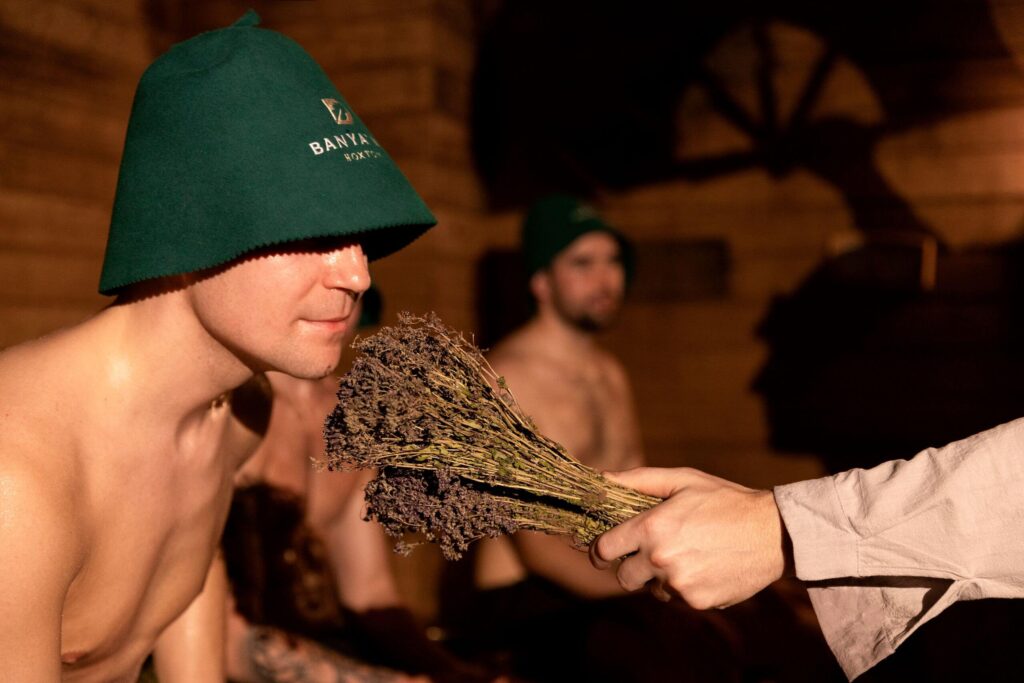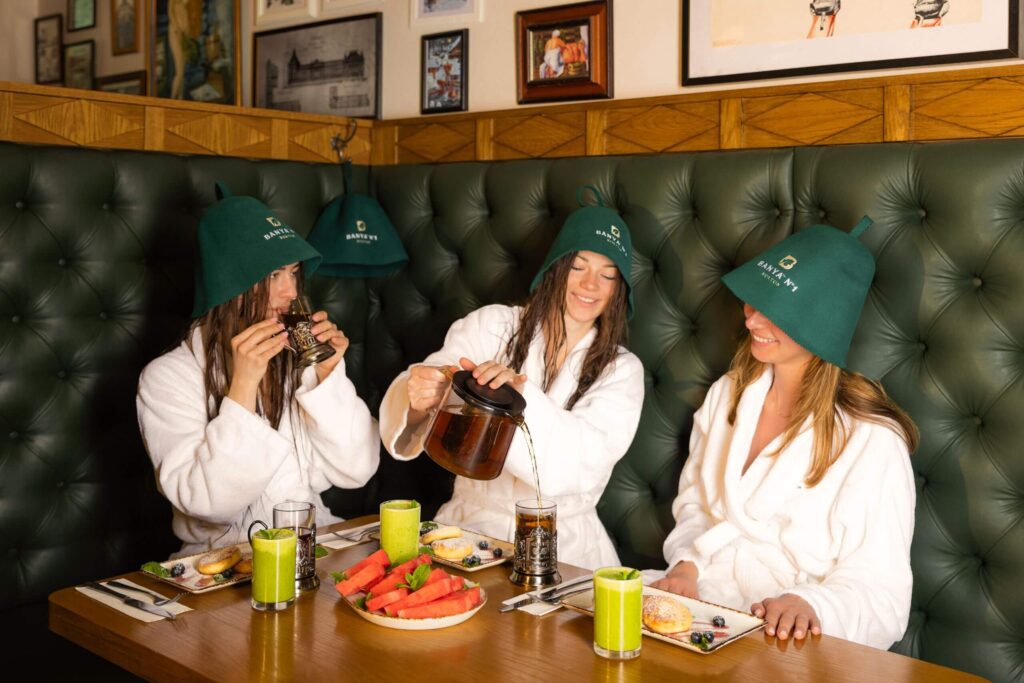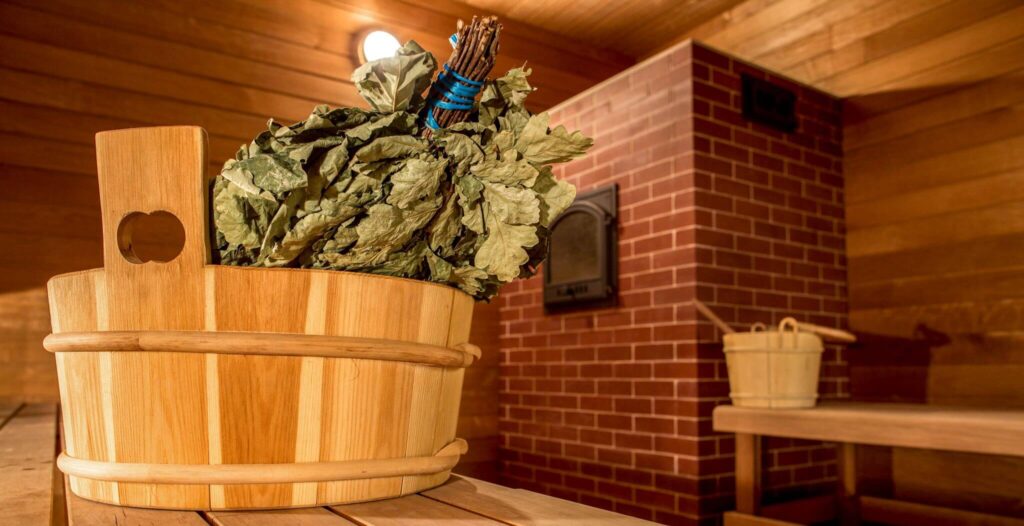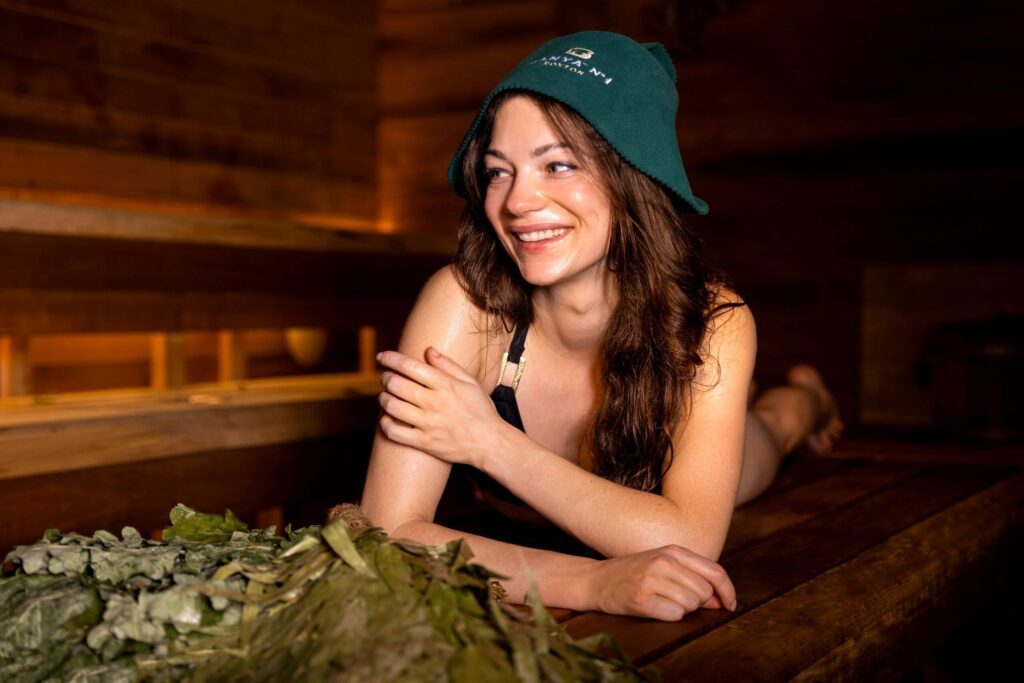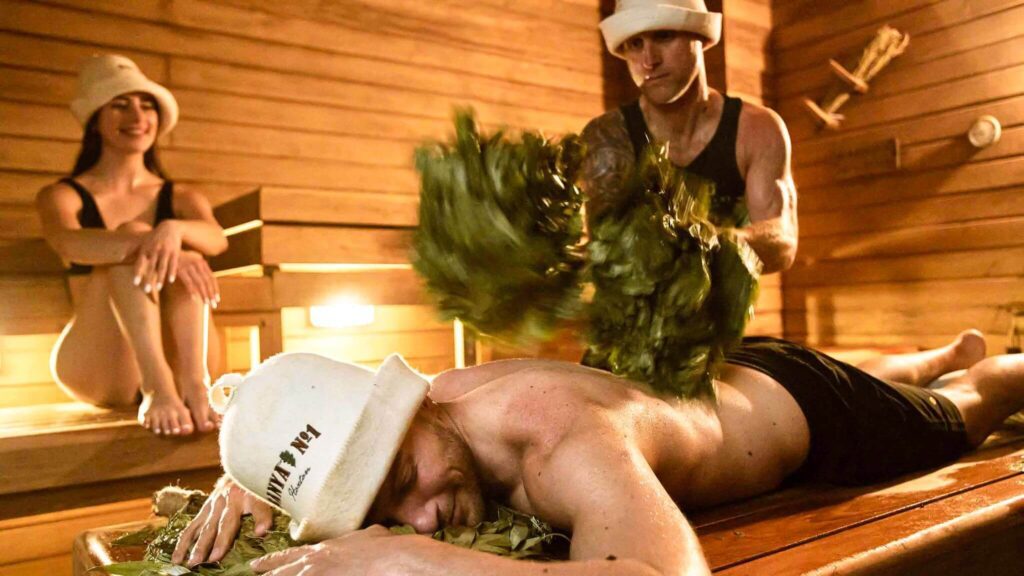Korean Spa vs. Russian Banya
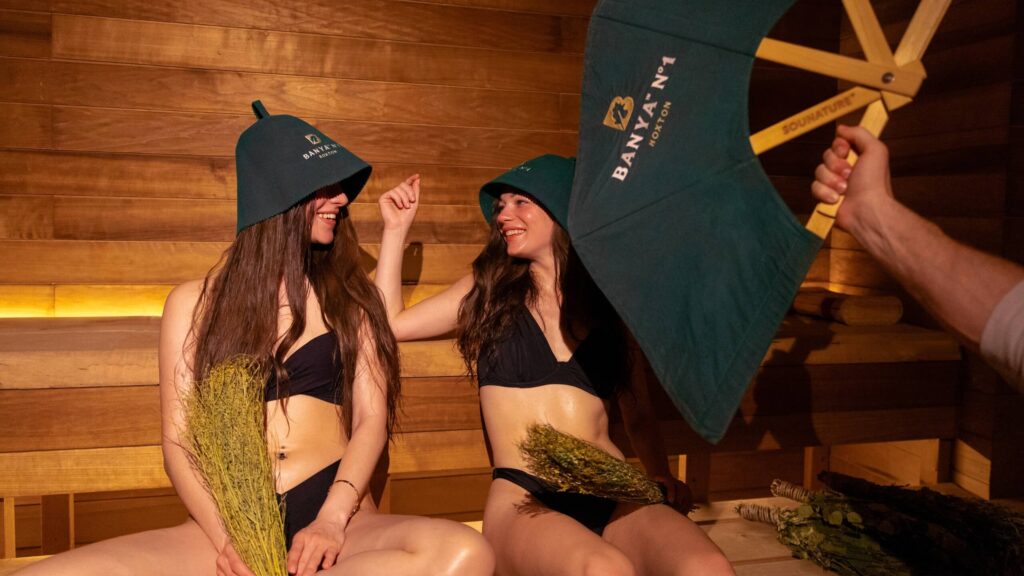
Korean spas and Russian banyas both focus on social wellness and sauna experiences. Korean spas provide a modern, family-friendly environment, while Russian banyas—equally welcoming to families—offer a deeply rooted tradition known for its invigorating effects, detoxification, stress relief, and rejuvenation. This article explores and compares these two unique experiences.
In recent years, both Korean spas and Russian banyas have gained international popularity. Korean spas blend traditional Korean health practices with modern amenities, offering heated rooms at varying temperatures. In contrast, the Russian banya is rooted in age-old Eastern European wellness rituals, delivering a more intense and invigorating experience.
Korean spas, known as jimjilbang, combine traditional practices with modern amenities, offering varied sauna rooms. However, they lack the intense, guided contrast of a Russian banya’s invigorating rituals, such as Parenie.
Both traditions support relaxation and health benefits, each offering unique practices and styles. Their growing appeal reflects a rising demand for holistic wellness experiences that are effective, social, and family-friendly.
Let’s dive in more detail.
Key Features of Korean Spas (Jimjilbang)
A Korean bathhouse offers a variety of rooms with specific temperatures and materials (jade, salt, clay, and charcoal). This range of rooms, often set at moderate temperatures with low humidity, provides a gentle and relaxing experience.

- Multiple Sauna Rooms. Each room in a Korean spa provides unique benefits. People value charcoal rooms for purification, while salt rooms help improve respiratory health. Dry saunas are also common in Korean spas.
- Hot and cold pools: Korean spas provide a more relaxing experience with both hot and cold pool options. Guests can take a refreshing cold plunge after a sauna session or unwind in the warm water, allowing for a gentle contrast experience.
- Nudity: Korean Spas often have gender-segregated bathhouse areas as being nude is a traditional Korean spa (jjimjilbang) practice that fosters a sense of community, purity, and cleanliness.
- Heated Floors: Korean spas often feature heated floors where guests can rest, nap, or meditate after using the saunas.
- Scrub Services: Full-body scrubs are a hallmark of Korean spas, offering deep polishing to promote skin health and circulation.
- Food and Social Spaces: Korean bathhouses also emphasise community, with areas for dining, relaxing, and socialising. For a complete experience, many feature traditional Korean snacks, like baked eggs and cold rice drinks.
The Russian Banya: Tradition, Invigoration and Parenie Ritual
A Russian banya is a historic wellness practice rooted in hot and cold contrast therapy, high humidity, and natural materials. In Russian banyas, temperatures often reach 90-100°C (194-212 °F), with 40-70% humidity, creating an environment for deep detoxification and exhiliration.

- Steam and High Humidity: Russian banyas create steam by pouring water over hot stones, generating a rich, moist heat for deep sweating and cleansing. Thanks to high humidity, it is much easier to breathe in the Russian banya steam room.
- Parenie Ritual: A signature feature of Russian banyas – the Parenie treatment – is an ancient intense wellness practice. Steam masters expertly use leafy bundles (called veniks) to circulate steam and massage the skin, followed by a refreshing cold plunge. This ritual relieves muscle tension, eliminates toxins, reduces stress, sharpens mental focus, and can even support weight loss.
- Cold Plunge or Ice Bath: Following the intense heat, guests are traditionally guided to a cold plunge or ice bath, completing the invigorating contrast therapy. This process stimulates circulation, boosts the immune system, and leaves guests feeling refreshed and rejuvenated.
- Nudity: Like Korean spas, Russian banyas traditionally embrace nudity as part of the experience. At Banya No.1 – Hoxton, we offer dedicated men-only and women-only spa hours for guests who prefer bathing nude, allowing you to be naked in the sauna to fully embrace the experience and steam room benefits.
- Food and Social Spaces: Similar to Korean Spas, Russian banyas offer social areas for relaxations in between the hot and cold sessions with food and drinks options. At Banya No.1, guests can enjoy private tables where they sample traditional Russian and Eastern Euopean food and drink options that perfectly restore the electrocyde balance and dehydrate during the experience.
- Organic and Effective Spa Treatments: Beyond the core experience, Russian banyas traditionally offer a variety of massage and skincare treatments that use natural, organic ingredients. These treatments are designed to enhance detoxification, nourish the skin, and leave you feeling refreshed and invigorated.
- Private Experiences: While banyas are traditionally social, at Banya No.1 you also have the option to enjoy a private experience—perfect for special occasions like a birthday wellness party! Our Private Banya can be hired exclusively to suit your needs.
- Natural Design: Russian banyas prioritise a rustic, natural aesthetic, with interiors crafted from wood to create a minimalist, nature-inspired environment.
Korean Spa London vs. Russian Banya
For those in London seeking a Korean spa or Russian banya, here’s a breakdown of what to expect from each experience:

- Steam Room Temperature and Humidity: Korean spas offer rooms with varied temperatures (40-80 °C (104-176 °F)) and low humidity, creating a gentler, more relaxing atmosphere. Russian banyas, on the other hand, provide intense heat (90-100 °C (194-212 °F)) combined with high humidity, promoting deep detoxification and requiring cooling breaks for balance.
- Rituals and Treatments: Korean spas focus on skincare and relaxation through gentle sauna sessions and full-body scrubs. Russian banyas emphasise intense wellness practices and organic body treatements, including the invigorating Parenie ritual, which combines steam, thermal massages, and cold plunges for maximum rejuvenation.
- Social and Dining Spaces: Both Korean spas and Russian banyas offer communal spaces for relaxation and dining. Korean spas feature snacks like baked eggs and cold rice drinks, while Russian banyas provide hearty Russian and Eastern European dishes, tailored to restore energy and rehydrate.
- Atmosphere and Design: Korean spas showcase modern, family-friendly facilities, while Russian banyas maintain a rustic, nature-inspired aesthetic, prioritising traditional materials like wood to create an authentic, minimalist environment.
- Experience Style: Korean spas are perfect for those seeking a gentle, relaxing experience with a social focus. In contrast, Russian banyas offer an intense, guided contrast therapy steeped in historic traditions, while also emphasising social wellness.
Which Social Wellness Experience Is Right for You?
Both Korean spas and Russian banyas provide unique wellness benefits, but your choice depends on your goals. Korean spas are suited for those seeking gentle heat therapy, diverse relaxation options, and vibrant social spaces. In contrast, Russian banyas offer an intense and rejuvenating experience, with benefits like deep muscle relaxation, stress relief, and detoxification through rituals like Parenie.

Experience the power of tradition—choose your Russian sauna journey at Banya No.1 – Hoxton.

